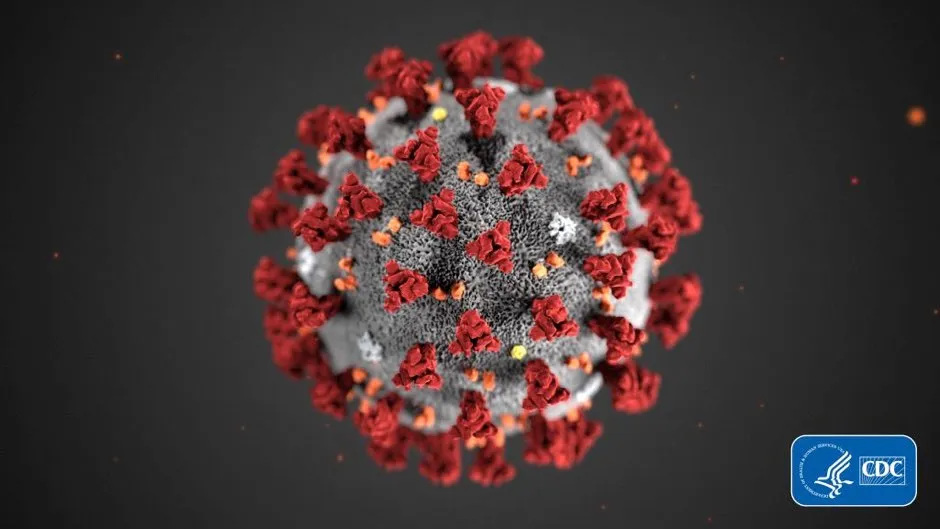Aggressive control measures appear to have halted the first wave of coronavirus in areas outside Hubei province in China, research suggests.
But scientists warn there is a substantial risk of the virus being reintroduced from abroad.
They say that with economic activity increasing, real-time monitoring of COVID-19 transmissibility and severity is needed to protect against a possible second wave.
The study, published in The Lancet, estimates that in regions outside Hubei, the average number of cases generated by a single infected individual during the outbreak fell after lockdown measures were introduced.
It adds that this number has since remained below one, suggesting the pandemic has shifted from one that is expanding rapidly to one that is slowly shrinking.
Read the latest coronavirus news:
- Coronavirus 'a wolf in sheep's clothing', tricking its way into the human body
- Coronavirus test that uses lasers available 'within a year'
- Coronavirus: supercomputers drafted in to detect potential treatments
- Behavioural scientists 'very concerned' about mass coronavirus testing
Mathematical modelling suggests premature lifting of control measures is likely to lead to transmissibility exceeding one again, resulting in a second wave of infection.
Researchers say their findings are critical for countries in early stages of lockdown.
However, the study did not specifically examine the effect of each intervention, or which was most effective in containing the spread of the virus.

Professor Joseph T Wu from the University of Hong Kong, who co-led the research, said: “While these control measures appear to have reduced the number of infections to very low levels, without herd immunity against COVID-19, cases could easily resurge as businesses, factory operations and schools gradually resume and increase social mixing, particularly given the increasing risk of imported cases from overseas as COVID-19 continues to spread globally.
“Although control policies such as physical distancing and behavioural change are likely to be maintained for some time, proactively striking a balance between resuming economic activities and keeping the reproductive number below one is likely to be the best strategy until effective vaccines become widely available.”

The data suggests the confirmed case fatality risk – the probability of dying among confirmed cases of COVID-19 as officially reported – outside Hubei was 0.98 per cent.
This is almost six times lower than the 5.91 per cent in Hubei and varies substantially among different provinces,
“Even in the most prosperous and well-resourced mega cities like Beijing and Shanghai, healthcare resources are finite, and services will struggle with a sudden increase in demand,” said senior author Professor Gabriel M Leung, from the University of Hong Kong.
How to protect yourself during the coronavirus pandemic:
- Coronavirus mythbuster: a GP separates the facts from the fake news
- Should we all wear face masks?
- Coronavirus antibody tests: How they work and when we'll have them
- Lockdown: why is social isolation so hard?
- 10 science-backed tips to help you work from home successfully
On 23 January stringent restrictions were put on the movement of people and goods after the outbreak in Wuhan.
Since 17 February, restrictions have been gradually relaxed in several provinces.
“We are acutely aware that as economic activity increases across China in the coming weeks, local or imported infection could lead to a resurgence of transmission,” said co-lead author Dr Kathy Leung, from the University of Hong Kong.
The researchers acknowledged their study had limitations, including that the estimated reproductive numbers were based on the reported number of confirmed cases, and the time and dates of symptom onset were unavailable for some provinces.
Also, a limited number of simulations for relaxing control measures were done, and did not specify which interventions or public responses to the outbreak might correspond to each of these scenarios.
Can I get the coronavirus twice?
There have been a few stories in the press of people apparently being re-infected by the coronavirus SARS-CoV-2. These people reportedly became infected and hospitalised, and then were sent home once they’d tested negative for the virus. Then, days or weeks later, they tested positive again.
But this doesn’t necessarily mean that they caught the coronavirus twice.
First, during recovery from infection, a person may have very low amounts of the virus remaining in their body – low enough that our tests can’t accurately detect it. In this case, the person may be sent home on the assumption that they’re virus-free. However, their body may still be fighting the virus, and a resurgence of the virus (and symptoms) can occur, resulting in a positive test. In this case, it would just be one protracted infection, not a re-infection.
Second, we know that in most people, SARS-CoV-2 generates a strong response from the immune system. With the related coronavirus SARS-CoV, this response creates an immune memory of the virus that prevents re-infection for one to two years, and it’s likely that this is also the case for the new virus. SARS-CoV-2 also has a fairly low mutation rate, which means that it (hopefully) won’t change enough that our immune system no longer remembers it (this is what the flu virus does and why we need a new jab every year).
If this all turns out to be true, then it would suggest that re-infections are unlikely and that the cases in the news reflect testing sensitivity. However, SARS-CoV-2 is so new that we won’t know for sure until we’ve found out just how protective our immune response to the virus is, and how long it lasts.
Read more:

